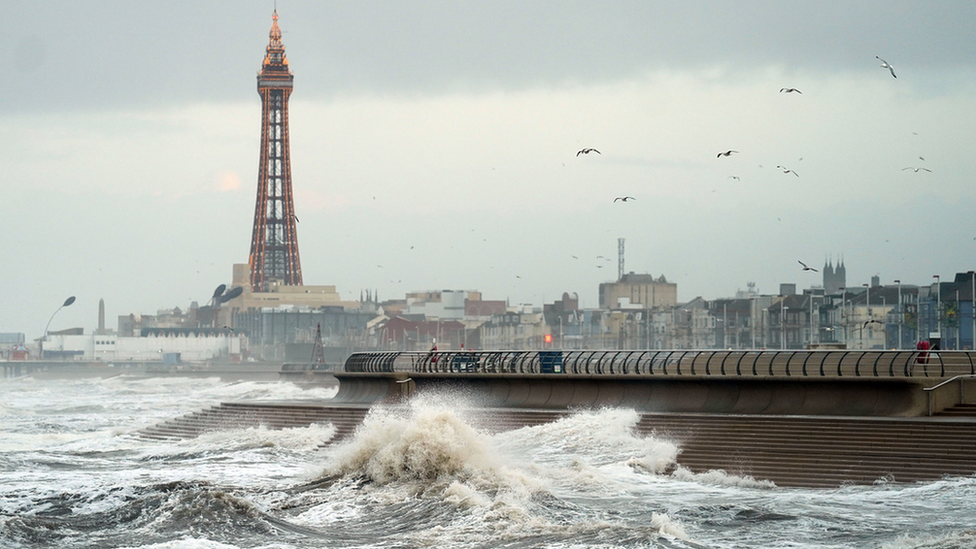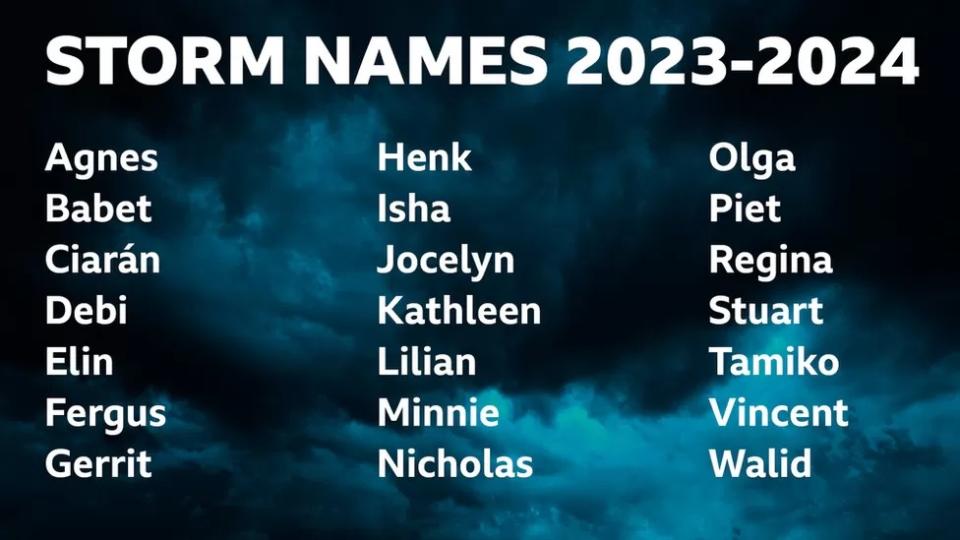Storm names 2024: How do new storms like Kathleen get their names?

Storm Kathleen will bring yet more wet and windy weather to parts of the UK over the weekend.
Met Office warnings are in place for Friday and Saturday, with strong wind and gusts of up to 50mph (80km/h) forecast for parts of England, Scotland, Wales and Northern Ireland.
The north and west coast of Scotland and England are in store for the strongest gusts, with the Met Office warning they are expected to reach 70mph (113km/h).
Storm Kathleen is the 11th named storm of the 2023-24 season, making it the joint most stormy period since they began to be named in 2015.
Why do storms have names?
In the UK, the Met Office names any storm when it has the potential to cause disruption or damage.
It believes that it is easier to follow the progress of a storm on TV, radio, or social media if it has a name.
The Met Office said: "We have seen how naming storms elsewhere in the world raises awareness of severe weather before it strikes."
The US began naming tropical storms in the 1950s.
How are storms named?
The UK Met Office and Irish service Met Éireann launched their first "Name our Storms" campaign in 2015.
Most years, they draw the names from a shortlist of favourites submitted by the public. Since 2019, they have been joined by the national weather service of the Netherlands, which also chips in a few suggested names each year.
In previous years, storms have alternated between male and female names.
However, for the 2023-24 season, the Met Office has altered this, naming a number of storms after prominent scientists, meteorologists and others "who work to keep people safe in times of severe weather".
What names are on this year's list?
When the criteria for naming a storm are met, either the Met Office, Met Éireann or Dutch weather agency KNMI can name a storm, taking the name from the latest list in alphabetical order.
Jocelyn, the last storm to hit the UK, was named by Met Éireann after Prof Jocelyn Bell Burnell, an astrophysicist who discovered the first pulsating radio stars, or pulsars, in 1967.
Kathleen was also named by the Irish service because more significant impacts are likely to be felt in the Republic of Ireland.
A total of seven names in the 2023-24 storm season were selected by KNMI - including Henk which was submitted by someone who visited an open day at the agency's headquarters in October 2022.

Babet was named after a woman who put her own name forward, "because I was born during a storm".
Storm Gerrit was named after a weather presenter who left the Dutch public news broadcaster NOS in 2023 after 25 years.
Storm Ciarán was named after Ciarán Fearon, a civil servant who works in the Department for Infrastructure in Northern Ireland. His job is to ensure key information is shared on river levels and coastal flooding.
Storm Agnes, which was recognised as the first storm of the season, was named after Agnes Mary Clerke, an Irish astronomer and science writer.
Around six to seven named storms impact the UK each year on average, which means names in the second half of the alphabet are put forward but are always unlikely to be used.
And if your name is Quentin or Yasmine, don't expect to be immortalised as a force of nature. Names beginning with Q, U, X, Y and Z do not even make the shortlist.
You may hear some names over the coming months which are not on the British/Irish/Dutch list.
That is because storms are named where they originate. Storms that reach the UK are occasionally the tail end of one that started in the US several days earlier - and may have been downgraded from hurricane or cyclone status.
How do other countries name storms?
The weather agencies of the UK, Ireland and the Netherlands make up the western European storm naming group.
Portugal, Spain, Luxembourg, France and Belgium, form the south western group that collaborate to name storms.
Norway, Sweden and Denmark are the northern group.
In the US, the National Hurricane Centre names tropical storms when they have reached winds of least 40mph, using alphabetical lists that are maintained by the World Meteorological Organisation. These lists are used on a six-year cycle.

